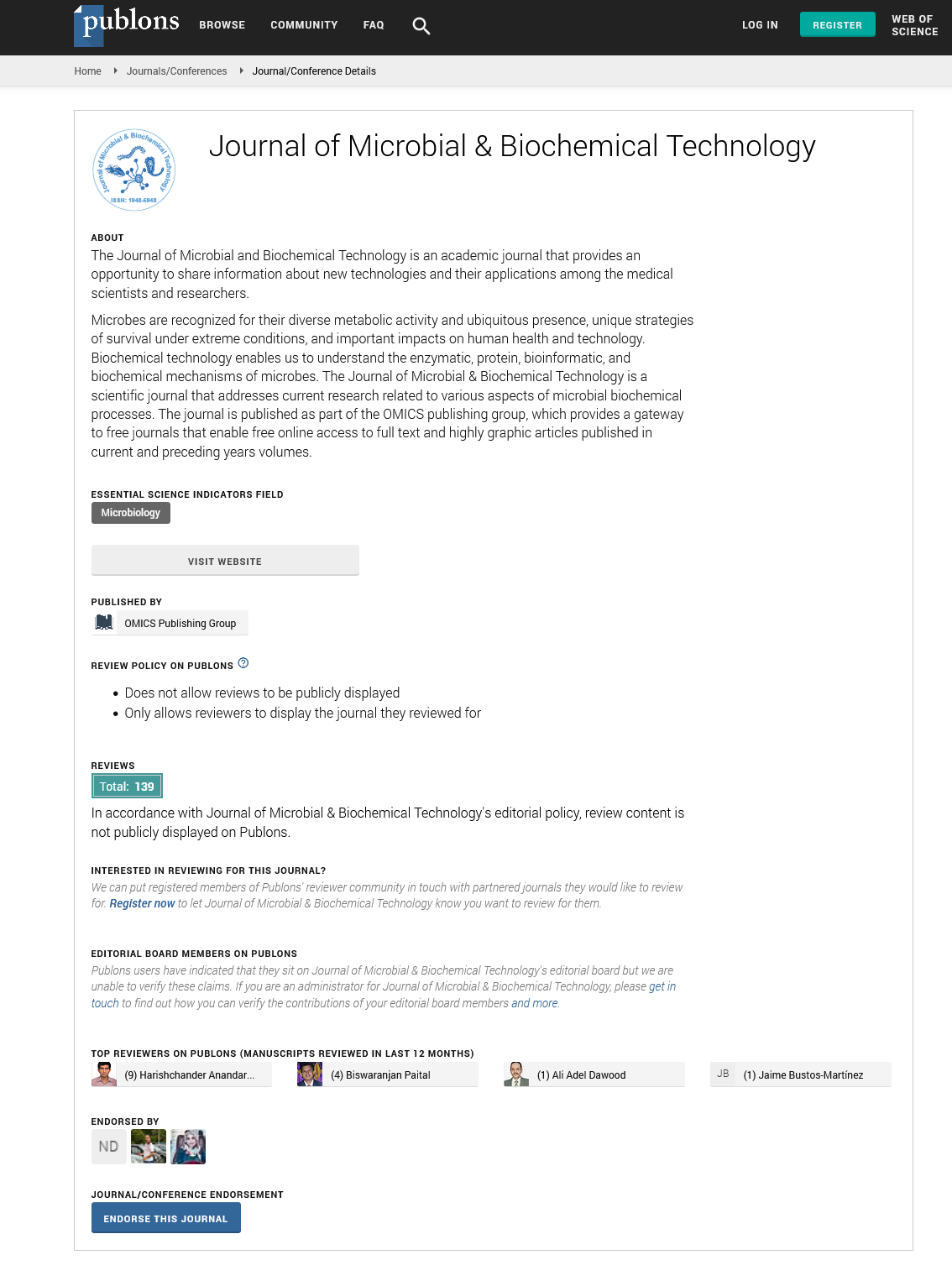Indexed In
- Academic Journals Database
- Genamics JournalSeek
- Academic Keys
- JournalTOCs
- China National Knowledge Infrastructure (CNKI)
- Scimago
- Access to Global Online Research in Agriculture (AGORA)
- Electronic Journals Library
- RefSeek
- Directory of Research Journal Indexing (DRJI)
- Hamdard University
- EBSCO A-Z
- OCLC- WorldCat
- SWB online catalog
- Virtual Library of Biology (vifabio)
- Publons
- MIAR
- University Grants Commission
- Geneva Foundation for Medical Education and Research
- Euro Pub
- Google Scholar
Useful Links
Share This Page
Journal Flyer

Open Access Journals
- Agri and Aquaculture
- Biochemistry
- Bioinformatics & Systems Biology
- Business & Management
- Chemistry
- Clinical Sciences
- Engineering
- Food & Nutrition
- General Science
- Genetics & Molecular Biology
- Immunology & Microbiology
- Medical Sciences
- Neuroscience & Psychology
- Nursing & Health Care
- Pharmaceutical Sciences
Elise S Pelzer
Elise S Pelzer
School of Biomedical Sciences, Institute of Health and Biomedical Innovation, Faculty of Science and Technology,
Brisbane, Queensland
Australia
Publications
-
Review Article
Steroid Hormone Dependent Inflammation and Regulation in the Endometrium in Women with Dysfunctional Menstrual Cycles: Is There a Role for Toll-Like Receptor Activation via PAMPs and DAMPs?
Author(s): Elise S Pelzer, Flavia Huygens and Kenneth W Beagley Elise S Pelzer, Flavia Huygens and Kenneth W Beagley
Summary Sentence The role of microbial and immunological menstrual cycle-dependent changes within the endometrium may provide insight into the underlying causes of dysfunctional menstrual cycles. Abstract The ovarian steroid hormones control cyclic cellular proliferation, differentiation, inflammatory cell recruitment, apoptosis, tissue degradation and regeneration associated with the menstrual cycle as well as the response to pathogen challenge. Women with dysfunctional menstrual cycles (menorrhagia and dysmenorrhea) exhibit altered cytokine and prostaglandin expression in the endometrium implying ongoing recruitment of innate immune mediators. Activation of TLRs by endogenous and/or exogenous ligands caused by cell damage resulting from ongoing inflammation, endogenous microbiota or dysbiosis may contribute to the inflammatory symptoms associated.. View More»
DOI: 10.4172/1948-5948.1000307

